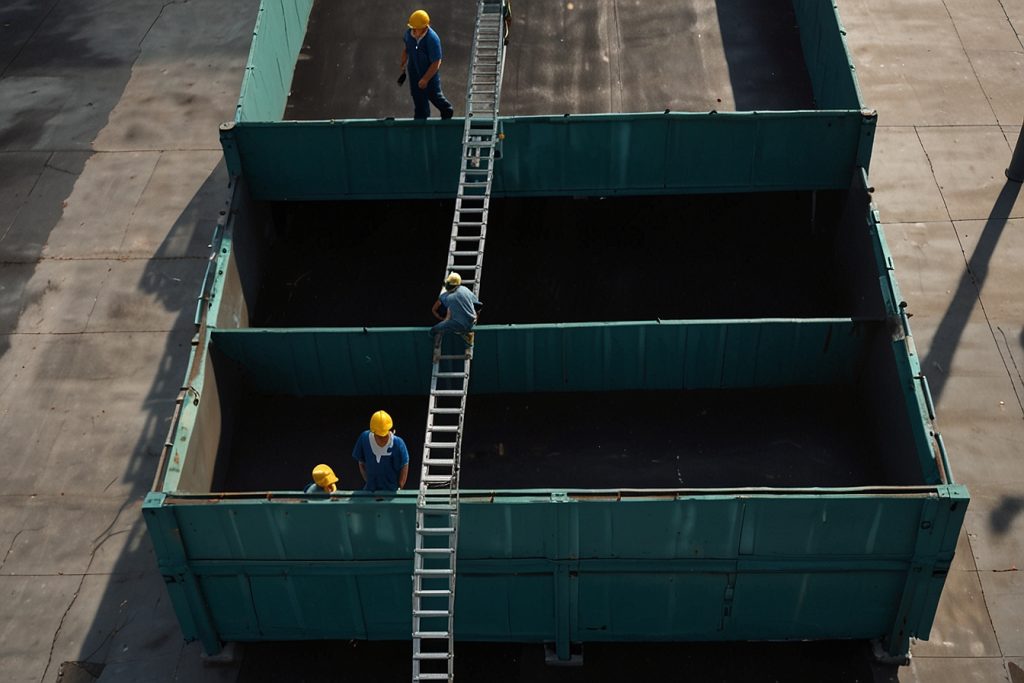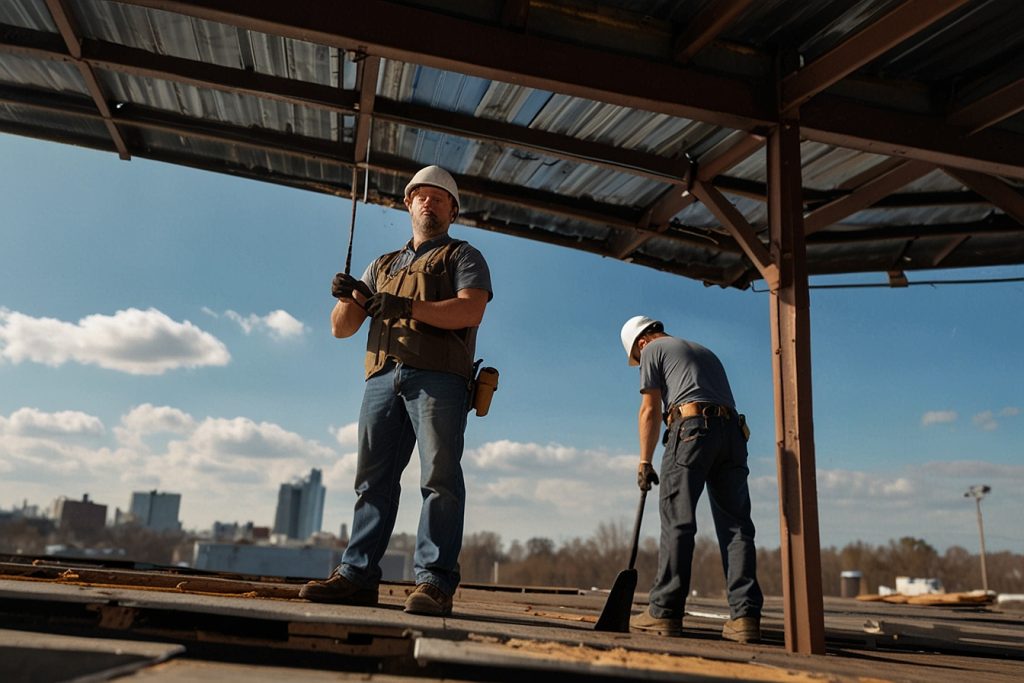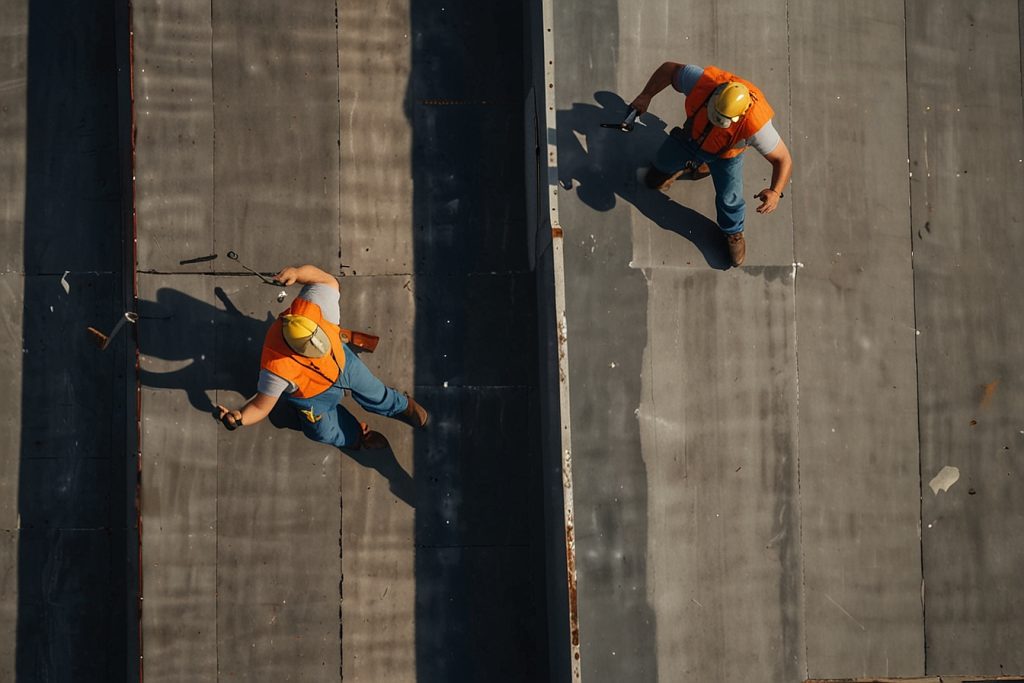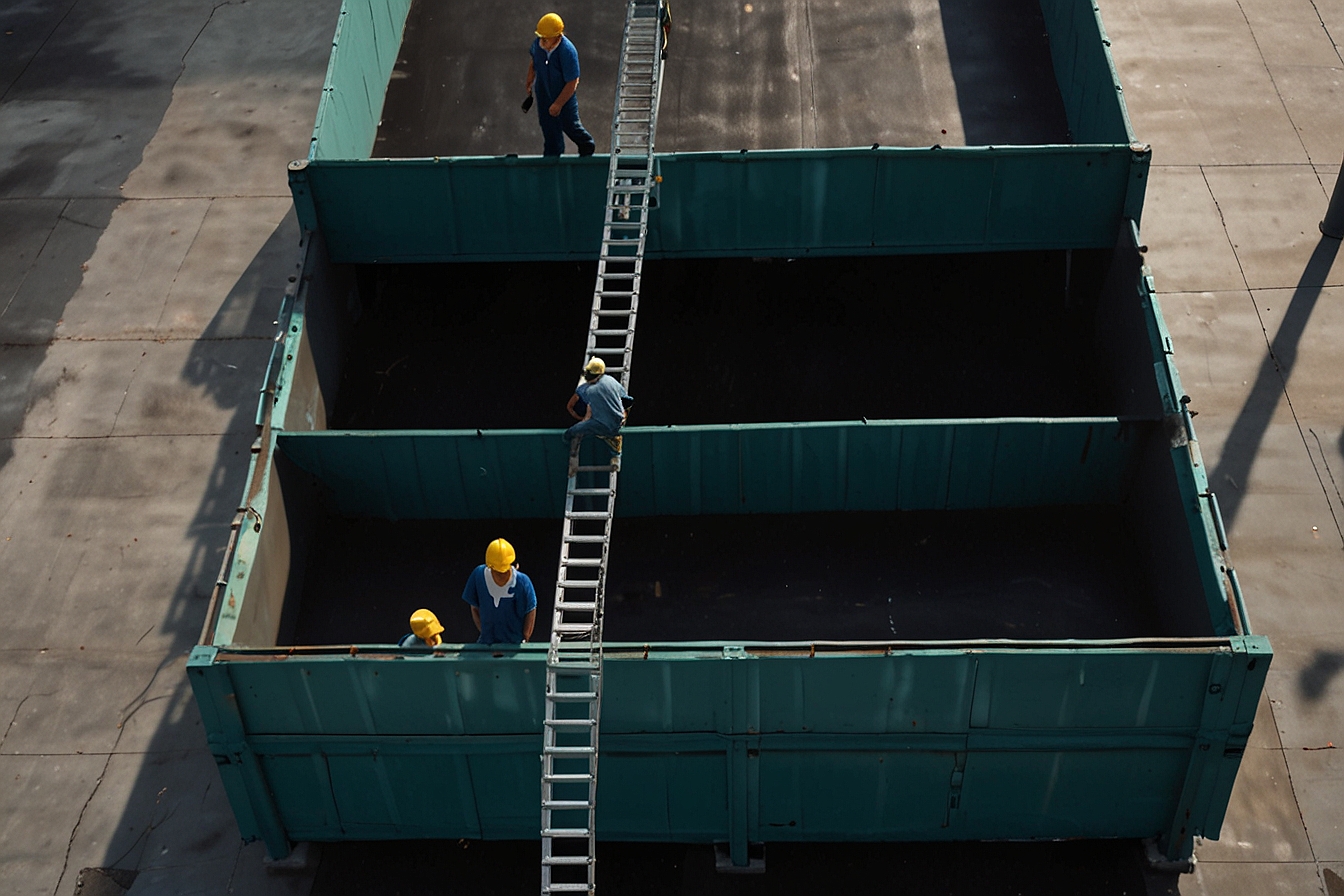Why Do Commercial Buildings Have Flat Roofs
Commercial architecture often features flat roofs, a design decision driven by practical considerations.
My observations reveal that these flat surfaces provide an array of benefits, particularly for large-scale buildings.
Charles Jimerson, the founder of CJ Commercial Roofing NJ had this to say “Flat roofs are not completely horizontal; they have a slight incline that facilitates water drainage. This subtle slope is generally unseen from the ground, providing an aesthetic of sleek simplicity that many commercial building owners appreciate.”
The installation process of flat roofs is another factor I consider significant.
It is comparatively quicker and more straightforward than that of their pitched counterparts, which is especially advantageous for expansive commercial structures like a metal roof.
The ease of installation, coupled with a simpler support structure, often results in reduced construction costs.

Moreover, I note that flat roofs require fewer materials, further contributing to economic efficiency.
In terms of utility, flat roofs offer enhanced flexibility.
From my perspective, the additional space can be ingeniously utilized for various purposes, such as housing HVAC systems, creating green spaces, or even serving as additional storage.
This versatility is particularly useful for commercial buildings where maximizing usable space is crucial.
Design and Construction Advantages
In commercial building design, flat roofs present numerous advantages during construction – from cost savings and material use to maintenance considerations. Below, I will explore the specific benefits this roofing style affords in various aspects of design and construction.
Cost Efficiency and Materials
Flat roofs are often more cost-effective compared to pitched roofs due to the lower amount of materials required for installation.
Materials like EPDM, TPO, and PVC roofing offer affordability alongside durability, making them an excellent choice for flat commercial roofing solutions.
Practical Benefits and Space Utilization
Flat roofs provide additional space for equipment storage, including HVAC units.
The low-slope roof design maximizes usable space atop buildings, allowing for installations such as solar panels without sacrificing the building’s interior space.
Durability and Maintenance
The materials used for flat roofs, such as synthetic rubber, modified bitumen, and built-up roofing, are known for their longevity and durability.
These materials make maintenance and repairs simpler and more cost-efficient over the roof’s lifespan.
Environmental and Energy Considerations
Flat roofs can enhance a building’s energy efficiency with options like green roofs and the use of reflective materials.
The addition of solar panels is also more manageable on flat surfaces, contributing to a building’s overall sustainability and reduction in energy costs.
Architectural and Aesthetic Aspect
From an architectural standpoint, flat roofs offer a sleek and modern look, allowing for a more streamlined aesthetic that is often associated with commercial buildings.
The design flexibility means architects can integrate features that complement the building’s purpose and locale.
Safety and Accessibility Features

Owing to their design, flat roofs are safer and easier to access for inspection and maintenance.
This ease of access means potential hazards are minimized for maintenance personnel who need to navigate the roof for routine checks or repair work.
Weather and Climate Resilience
Flat roofs are constructed with water drainage systems, including internal drains and rainwater roll-off systems, to handle rain and snow.
These features ensure that despite their flat nature, these roofs can resist various weather conditions effectively.
Advantages Over Pitched Roofs
Compared to their pitched counterparts, flat roofs require fewer materials and labor for installation and roof replacement.
Their simplicity in design often results in quicker construction times and reduced complexity when integrating systems like drainage or solar panels.
Insurance and Value Implications
The durability and energy-efficient features of flat roofs can impact a commercial property’s insurance and value positively.
Properties with flat roofs may benefit from lower insurance premiums due to the natural resilience and affordability of the roofing materials and the construction process.
Drawbacks and Considerations

While flat roofs on commercial buildings offer certain benefits, it’s important for property owners to consider several drawbacks related to their vulnerabilities, maintenance needs, and other limitations before making a decision.
Weather Vulnerabilities and Challenges
Flat roofs are more susceptible to weather-related issues than sloped roofs.
They have a tendency to collect water if not properly designed with adequate drainage, leading to ponding that can cause leaks or structural damage. Heavy snowfall is also a concern, as the weight of accumulated snow can strain the roof structure.
Repairs, Upkeep, and Life Cycle Costs
Regular maintenance is key for flat roofs to prevent potential problems such as leaks.
Routine inspections are necessary to ensure the integrity of the gutter system and surface. When it comes to repairs, flat roofs can be more costly over their lifespan due to their design, which may influence the overall cost-effectiveness and value compared to pitched roofs.
Architectural Limitations
From a design perspective, flat roofs provide a modern, streamlined look but offer fewer architectural options compared to their pitched counterparts.
This can impact the aesthetic diversity and curb appeal of a commercial property. Also, the interior space directly under the roof may have limited usage due to the flat design.
Energy and Insulation Shortcomings
Flat roofs often face challenges in terms of insulation and energy efficiency.
They can absorb more heat, leading to increased cooling costs during summer. Without proper insulation, energy savings may be lower, translating to higher long-term operational costs for the building owner.
Potential for Commercial Restrictions
Certain zoning laws and commercial property standards may impose restrictions on flat roofs.
Issues such as signage visibility and installation of equipment can be affected by these restrictions, influencing decisions about commercial roofs.
Comparative Disadvantages to Sloped Roofs
When comparing flat roofs to sloped roofs, it’s clear that sloped designs typically offer better rainwater roll-off systems. They also generally have longer lifespans without the need for frequent maintenance.
Pitched residential roofs often have inherent advantages like fewer leaks and enhanced aesthetic appeal. These are advantages that flat roofs might lack.
